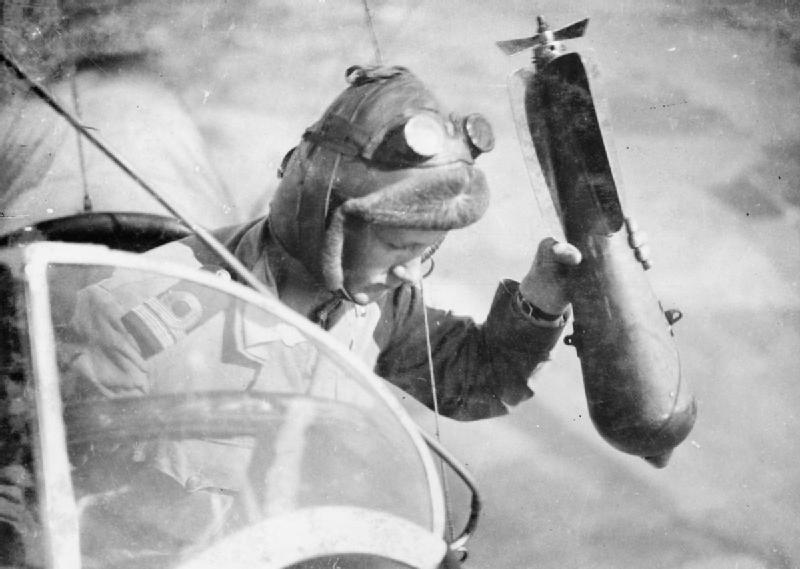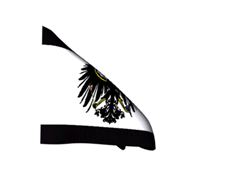icient for the purposes for which they were designed because they are outranged by
foreign ships having guns of superior range and possessing superior speed.”
A New York Tribune in February 1916 article cited, “Only 19 First Class capital ships
available for war, all based in the Atlantic Fleet”.
World War I
In 1917 Germany elected to resume full unrestricted submarine warfare. They anticipated this
would bring America into the war, but the Germans gambled that they could defeat Britain
by this means before the U.S. could mobilize. As the result of careful calculations, the German
high command firmly believed that their submarines could not only prevent the large scale
transportation of American troops across the Atlantic, but furthermore could also cut the sea
communications of her European enemies to such an extent as to force them to an early
surrender through lack of supplies from overseas. German planners estimated that if the
sunken tonnage exceeded 600,000 tons per month, Britain would be forced to sue for peace
after 5 to 6 months. The Germans hoped their submarines would be the decisive weapon to
win the war.
U.S. Naval Priorities:
In response the U.S. Navy set out to meet the following wartime challenges:
- Provide armed escort vessels for merchant convoys, capable of minimizing the submarine
threat.
- Provide the sea bridge to move the American Army to the Theater of Operations
- Reinforce the Grand Fleet with American Battleships
- Defeat the submarine through technology advancements (Sonar, Mines)
- Create a Naval Aviation arm to assist escort and scouting
- Augment the Army with Marines and Artillery
The main theater of World War I was the Western Front and in order to relieve the British
and European allies already on the frontline, the United States Navy was tasked with
transporting millions of American soldiers and supplies across the Atlantic to France as soon
as possible. The United States Navy was ill prepared for war though; the only solution was
to begin deploying whatever was available on convoy duty and arming merchantmen with
small naval guns and armed guard detachments.
Overseas American troop movements in our own transports began with the sailing of the
Tenadores, Saratoga, and Havana from New York, escorted by the U.S.S. Seattle, the U.S.S.
DeKalb (troop transport), and the destroyers Wilkes, Terry, and Roe, on June 14, 1917. The
movement grew at an astonishing pace, as the following table of aggregate troops transported
before the armistice demonstrates:
Troops Carried
United States Navy transports - 911,000
Other United States ships - 41,500
British ships - 1,007,000
Other foreign ships, French, Italian, etc.- 121,000
Only the fastest vessels, such as the Leviathan, the Northern Pacific, and the Great Northern, were
allowed to go unescorted, their high speed being considered sufficient protection.
Battleship Employment
Within a few weeks after the United States entered with the World War its battleship force,
which had been cruising in Cuban waters, was sent to Chesapeake Bay. With the American
entry into the Great War on April 6, 1917 the Delaware was assigned to the Chesapeake Bay to
train five inch gunnery crews before their assignments to other naval craft as well as armed
merchant ships. Thirteen armed guard crews of five men each were trained simultaneously, as
well as a great number of apprentice firemen, seamen, and mechanics.
Some idea of the scope of the problem of training men may be gained from the fact that at war’
s start there were 70,000 men and officers in the Navy, whereas at the time of the armistice the
number had been increased to 538,000. In addition to keeping itself ready for service by
extensive maneuvers during most of the war, the battleship force was largely engaged in this
work of training. Recruits would be sent to the greatly expanded training stations on shore
for a short preliminary period of training and then to the battleships in Chesapeake Bay for a
finishing course of several weeks, including the actual firing of guns at target practice.
Finally, the men were transferred to ships in active service at sea. Delaware’s sister ship North
Dakota spent virtually the entire war in service as a training ship based stateside on the
Eastern Seaboard.
The British First Sea Lord sent an urgent request to Washington for four coal burning
battleships to reinforce the Grand Fleet in July 1917. The Royal Navy was short of
manpower to face the growing submarine threat, and required experienced crews for its new
cruisers and destroyers. It planned to take five of its pre-Dreadnought battleships out of
commission and use their crews elsewhere. The American Battleships were to fill the gap left
behind.
The Americans had their own naval personnel problems. Many of the experienced and
trained gunnery crews from the battle fleet were lent to armed merchantmen to defend against
the submarine menace. The readiness of the battle fleet was lowered by their inexperienced
replacements.
The Royal Navy request was initially rejected. The US Navy doctrine based on Alfred Thayer
Mahan’s theories was to keep the battle fleet concentrated. America had 14 modern
Dreadnought battleships at the outbreak of war in April 1917, but only 74 destroyers. These
were too few to screen the dreadnoughts and the other 23 pre-Dreadnought class battleships,
ten armored cruisers and 25 light cruisers of the fleet. The cost of the aggressive dreadnought
building campaign came at the expense of lesser ships in the years before the war.
America was wary of splitting its fleet with the possible threat of a two ocean war and an
unpredictable Japanese presence in the Pacific. The United States had already given up a
number of destroyers for convoy duty that were needed to screen the battleships. Destroyers
and other similar warships of the escort type were thought to be the most effective means of
sinking German submarines and protecting merchantmen so destroyer squadrons were based
in the British Isles. Battleships without the scouting and screening of destroyers were
vulnerable, and the destroyers were in short supply.
A visit to Britain by the two senior American Admirals gave grudging acknowledgement to
the notion of sending an advance force interposed between America and her enemy. They also
recognized that the nation would not tolerate a fleet that simply stayed home in a post war
budget battle. On November 7 the British request was approved.
This is a bit about my Great Grandfather's ship the USS Delaware BB-88
The Grand Fleet
Delaware entered the Boston Navy Yard for voyage repairs on November 15, 1917 and joined
Battleship Division Nine at Lynhaven Roads on the 24th. She put to sea the following day in
company with battleships New York (BB-34), Wyoming (BB-32), and Florida (BB-30). Off the
Grand Banks the flotilla encountered 90 mile per hour gales and enormous seas. Ships boats
were crushed and hatches sprung.
They reached Scapa Flow in the Orkney Islands on December 17 for duty with the Sixth
Battle Squadron, British Grand Fleet. Delaware and her consorts were greeted by British
Admiral Sir David Beatty and the crew of the HMS Queen Elizabeth. The American fleet was
placed under the operation control of the Admiralty. British flag signals, radio codes, tactical
maneuvering orders and fire control methods were adopted and Royal Navy signalmen were
lent to the ship to teach British methods.
Delaware anchored in the Forth River at Rosyth Scotland the next day and spent much of the
next six months protecting allied shipping in ocean lanes and approaches between that port
and the Orkney Islands. Target practice in Pentland Firth revealed shortcomings in gunnery
that fell short of British wartime standards. American rate of fire and accuracy needed much
improvement.
Admiral Hugh Rodman was the American battleship force commander. He had previously
been the Captain of the Delaware (1912-1913). He had an amicable relationship with his
British colleagues. He and his American Captains were frequent dinner guests with Admiral
Beatty at Aberdour House in the Firth of Forth. The Americans were welcomed with a
baseball diamond and a couple of days off for the Fourth of July. Up to 200 of the crew were
given liberty on shore in relays. The Americans as guests on British ships complained that
they, “were too cold for men brought up in American homes. They were likewise poorly
ventilated by our standards.”
In their first sortie on their own, Delaware sailed with the squadron from the Orkney Islands
on February 6, 1918 as part of a supporting force of British Cruisers under Rodman’s
command for a convoy bound for the coast of Norway with an escort of eight British
destroyers. While waiting for the appearance of the returning convoy off Stavanger on
February 8, battleship Florida maneuvered to clear a torpedo wake and destroyers dropped
depth charges into the sea and another torpedo crossed ahead of Delaware by several hundred
yards. Three minutes later her lookout aloft reported the wake of a torpedo dead ahead of
Delaware who put her rudder hard left and passed just inside its wake. The destroyers drove
off the raiding U-Boat and she returned to Scapa Flow on February 10th. After the war,
German naval records revealed that no U-boats had attacked battleships that day off Norway.
The American squadron added USS Texas, a fifth battleship so the division could maintain
four ships on alert, allowing one to refit and repair as needed.
Delaware was a part of the escort for another convoy off the coast of Norway (March 8-12)
and then sailed with the Grand Fleet on April 24 to reinforce the 2d Battle Cruiser Squadron
which was on convoy duty and expected contact with the enemy. Only the vessels of the
advance screen made any contact, and the chance for sea action faded.
She stood out of Scapa Flow with the Sixth Battle Squadron on June 30, 1918, joined by a
submarine screen of British destroyers. This force was escorting the Mining Squadron into
the North Sea that afternoon when Delaware spotted the wake of a submarine periscope at 500
yards and let go with six rounds of 3-inch shells to discourage the enemy. The destroyers
moved in to drop depth charges and Delaware parted company with the Mining Squadron on
July 1, for return to Scapa Flow.
After six months of service the gunnery had been much improved. Rodman reported it as
“extremely fine, much better than we have ever done previously”. Admiral Beattie did not
agree. He regarded the Americans as “second string” and used them sparingly in operations.
They were assigned last in line, “where they were least likely to interfere with the movements
of the fleet.”
Delaware put to sea from Scapa Flow on July 6, 1918 with the Sixth Battle Squadron and
arrived at the Forth River anchorage of Rosyth on the 8th . King George V inspected the
ships of the squadron on July 22. Delaware cleared Rosyth after being relieved by Arkansas
(BB-33), on July 30, 1918 for her return to the United States after eight and half months on
station. She was escorted out to sea by the British destroyers Restless and Rowena, reaching
Hampton Roads on August 12.




















